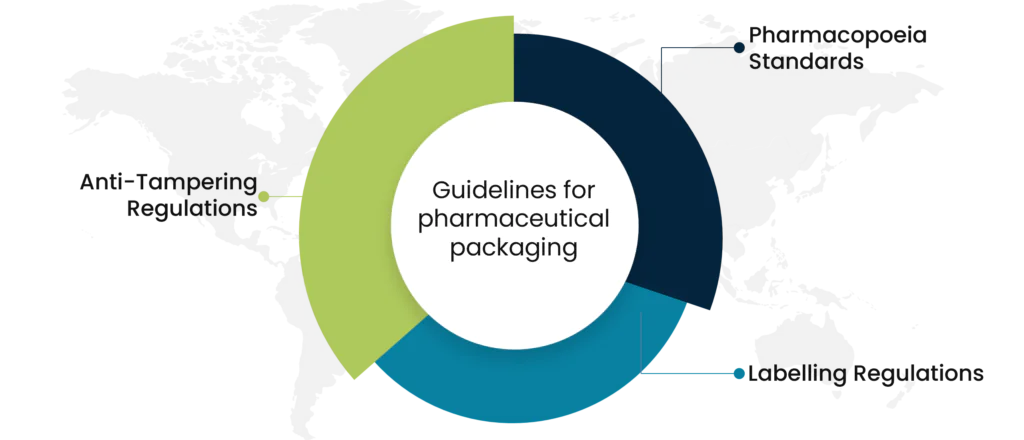Pharmaceutical packaging is a matter of serious concern for both the drug manufacturers and consumers. The primary objective of pharmaceutical packaging is to protect the medicine from external factors such as heat, moisture, oxygen, and contamination to ensure drug efficacy, patient safety, and extended shelf life. Since pharmaceuticals are sensitive to fluctuations in environmental conditions and contaminations, suppliers must comply with government rules and regulations regarding the packaging of medicines. Here are some of the regulatory frameworks that pharmaceutical packaging suppliers must comply by:

Anti-Tampering Regulations
Drug tampering cases like Tylenol tampering with potassium cyanide in the past have resulted in deaths. After the Tylenol case, the FDA issued the Federal Anti-Tampering Act, requiring OTC drug manufacturers to create tamper resistant packaging. FDA rules for OTC drugs are relatively simple as well. For instance, two-piece hard gelatin capsules need a minimum of two tamper resistant packaging features, whereas one feature is sufficient for everything else. Shrink wrap, blister wrap, bubble packs, HIS liners, sealed metal tubes, and aerosol containers are some of the options available for manufacturers to develop tamper resistant packaging.
Labelling Regulations
The pharmaceutical packaging industry is highly regulated in terms of labeling requirements. Key players in the pharmaceutical packaging industry must adhere to the Fair Packaging and Labeling Act (1967) in the US, which mandates the label to include product identity, manufacturer and supplier address, contents, net quantity, and prescription information.
Pharmacopoeia Standards
Pharmaceutical packaging suppliers must comply with the global pharmacopeia standards set by WHO to ensure product quality. For instance, water used in packaging processes should be EP grade as it ensures high purity of water and meets worldwide specifications. Although WHO standards are globally accepted, countries can modify the standards to suit their own needs; thus, forming standards such as European Pharmacopoeia – 5.12 and British Pharmacopoeia chemical reference substances (BPCRS).
More Guidelines for Pharmaceutical Packaging and Labelling
Pharmaceutical packaging and labeling are vital for safe and effective medication use. Ensure compliance with regulations, provide clear product information, and prioritize patient-friendly design. Implement child-resistant packaging, tamper-evident seals, and serialization for security. Consider Braille and multilingual labeling. QR codes and mobile apps can offer easy access to product information.
Utilize anti-counterfeiting technologies and tailor packaging for temperature-sensitive drugs. Include patient information leaflets and space for pharmacist labels. International harmonization and post-market surveillance are key. Consult experts and periodically update materials to align with evolving regulations and ensure patient safety and regulatory compliance.
Read more about the rules and regulations in the pharmaceutical packaging market along with supply market landscape, pricing, and procurement insights in SpendEdge’s upcoming procurement report on the pharmaceutical packaging market.




